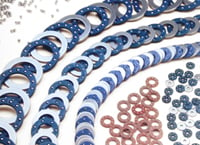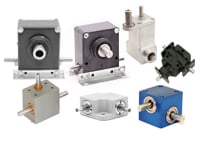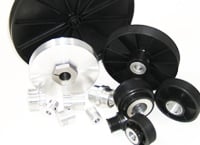Bearings literally make the world go round. They are called “bearings” because they “bear” the stress of an application’s moving parts.
The two major bearing classifications are radial bearings and axial bearings. Radial bearings create a force that radiates out from the axis or is perpendicular to the axis. When axial bearings are in use the force is parallel to the line of the axis.
This paper is on Axial Bearings, also known as Thrust Bearings. Thrust bearings create a force that is parallel to the axis, meaning the force is pushing against the bearing. There are many thrust bearing applications, but the primary application separates a rotating load from a non-rotating surface. Some examples: supporting a rotary table or absorbing the thrust of a boat’s or airplane’s propeller.
Click on the image below to download the full white paper.







